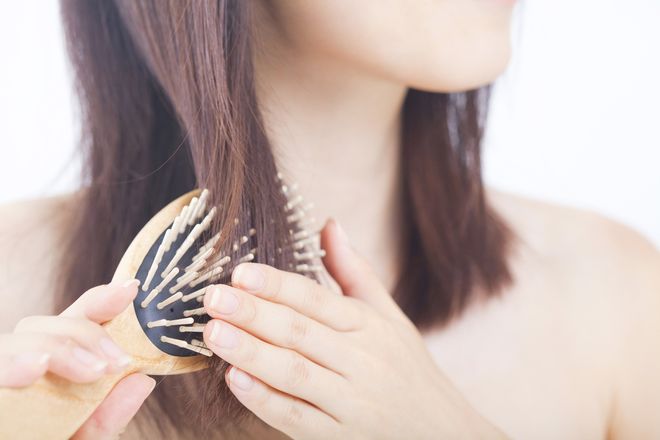
Gender bias in cosmetics is not a new topic. Besides just the basic stereotypical color-coding, we’ve heard about how women spend more on products than men. Now, thanks to a recent study, we can point to a specific product as definite proof.
It turns out women pay 40 percent more for the popular over-the-counter hair-loss treatment Rogaine or the generic version minoxidil.
It all started when Dr. Jules Lipoff was at his local Target and noticed that the Rogaine foam for men cost a lot less than the women’s version. Although the two products are marketed differently, they contain all of the same ingredients. He thought it was just marked incorrectly, but when we went to other stores, he saw the same thing.
In order to observe a wider demographic, Dr. Lipoff and colleagues compared prices of Rogaine and minoxidil from 21 different pharmacies in four states—Indiana, Ohio, New York and Pennsylvania. From July to November 2016, they investigated the prices at the chains CVS, Kroger, Rite Aid, Target, Walgreens and Walmart.
Recently, the foam was FDA-approved for both men and women at 5 percent strength. However, researchers found that women’s formulas cost, on average, $11.27 per ounce while the men’s cost just $8.05. That’s a 40 percent increase in the average price for the women’s product, even though it contains exactly the same ingredients as the men’s.
They also looked at the topical liquid minoxidil, which is only approved at 2 percent strength for women and 5 percent strength for men. The products pretty much cost the same (an average $7.61 for women and $7.63 for men), even though the women’s version is not as strong.
“On one hand, we see that women are paying more than men for essentially an identical product,” Dr. Lipoff told Time. “And on the other, we see that they’re paying the same as men for something that’s not as effective.” He even told Reuters Health that most dermatologists he knows recommend people only use the men’s version because of the prices.
A Rogaine spokesperson told Health, “I can’t speak for pricing by individual retailers,” but that the prices are the same per ounce on the company’s website and when sold wholesale to pharmacies.
Dr. Lipoff says he didn’t conduct this research to accuse stores of discrimination. He was just trying to shine light on a bigger issue that is gender-based pricing. “I also hope we can bring forth a larger issue that we should consider how many of our costs in health care—not just medications but things like insurance and medical procedures—could be affected simply by gender.”
[“source-newbeauty”]

